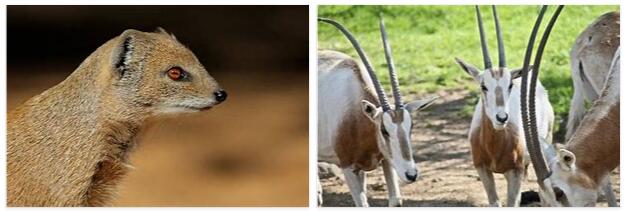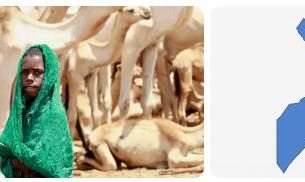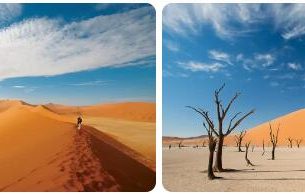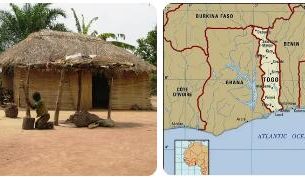Flora. – The tell, that is the coastal strip, is not very developed on the Tunisian coasts and consists of salty soils that have a vegetation similar to that of the coast of Provence and the Tyrrhenian coasts of Italy and the large islands.
The internal depressions, according to their more or less wide extension, are called sebca and chott: they are small internal basins that contain water only in the rainy period and in the summer are coated with a layer of almost pure sodium chloride (in the Chott el-Djerid the brackish waters have a density of 31 °, 2, higher than that of the common salt flats). In these areas there is a complex of halophiles that in part also live on the coast.
The herbaceous vegetation, sparse in winters with little rain, disappears at the beginning of summer: in winter the plants that bloom are almost none on the highlands, few in the Saharan region while in the surroundings of Tunis they are numerous.
The bush consists of: Pistacia lentiscus, Zizyphus spina Christi, oaks, junipers, myrtles, phyllirae, strawberry trees, gorse, rock cysts, heather, Tamarix gallica and then suffrutici or frutici, such as Globularia alypum, Lavandula stoechas and dentata, Thymus ciliatus, capitatus and Fontanesii, Passerina hirsuta and in some special areas also Chamaerops humilis.
In the north and in Krumiria the cork oak and the zean oak form compact formations that occupy about 160 thousand hectares; in the center there are compact populations of Aleppo pine (about 850 thousand ha.) and Quercus ilex ; in the south there are junipers, wild olive trees together with Aleppo pines and pistachios. In Wad Tala there is a forest of rubber acacias (Acacia tortilis); this is the extreme northern limit of these plants.
The alpha (Stipa tenacissima) does not cover vast areas as occurs in Algeria and Tripolitania; the Othonna cheirifolia, on the other hand, forms vast populations similar to those observed in the province of Constantina.
The mountains of Tunisia do not exceed 1500 m. of height, therefore you lack many woody plants (Cedrus, Taxus, Abies numidica) and herbaceous plants that are found on the Algerian mountains and highlands: however there are others typical of these regions together with some species of the Alps and the Pyrenees, such as Seseli nanum, Onopordon acaule, Calamintha alpina, Salvia phlomoides.
The vegetation of the great forests of Krumiria reaches its maximum splendor in the first half of July, when the vegetal carpet is completely dry in the Sahara and in the plains of the Sahel.
The Tunisian flora consists of about 2000 entities, while Morocco has 2400, Algeria 3000, Tripolitania and Cyrenaica about 2000, Egypt and Marmarica 1400, Italy 5000, France 5500, Spain almost as many as France. For Tunisia travel information, please check zipcodesexplorer.com.
The most represented families are: Compounds (247), Leguminosae (223), Grasses (202), Crucifers (97), Umbrelliferae (91), Scrofulariacee (52), Gigliacee (47), Ciperaceae (36), Ranunculaceae (34). The greater affinity of the Tunisian flora are with Algeria: in fact 8 / 9some species are common and 134 are exclusive to the two countries; Tripolitania then follows with a considerable number of plants common to the two territories, then there are relations with the western part of the Mediterranean basin, then those with Italy with 1347 species and varieties common to the two countries but only 5 exclusively Italian-Tunisian species. The endemic forms of the Tunisian flora are only 29, that is 1.4% of the total, and represent the lowest figure of all the regions of North Africa, because Algeria has 15.6% of endemisms: this is probably due the limited surface area of the territory and the lack of certain characteristic formations.
The endemic plants are: 7 Graminaceae, 4 Leguminosae, 3 Cruciferous, Serofulariacee and Lamiaceae (Teucrium), 2 Dipsacaceae (Scabiosa) and Asteraceae, 1 for each of the Diantaceae, Hypericaceae, Umbrelliferae, Plumbaginaceae families. Of these three endemic (Isatis aleppica var. Constricta, Lotus Rondairei, Aristida tunetana) have obvious affinities with oriental forms, l ‘ Hypericum Roberti is hardly distinguished from H. ericoides of Spain, the Dianthus hermacensis would be a variety of D. Bisignani Ten. Of southern Italy, theOnopordon espinae is intermediate between O. polycephalum Eastern and OR. glomeratum Steps, Teucrium ramosissimum is between Tunisia fragile Steps and Tunisia odontites of the East, the others – minus Sporolobus Tourneauxii and laetevirens which seem absolutely distinct from any other form – are similar to other species of northern Africa or widespread in the Mediterranean basin.
Several species are adventitious, introduced with crops in more or less ancient or recent times.
In some points of the desert coast such as in Gabes and in the desert territory towards the Sahara, there are oases composed exclusively of date palms.
Fauna. – As far as birds and invertebrates are concerned, the Tunisian fauna, with a Mediterranean character, does not differ from that of the other countries bordering the western Mediterranean and especially the neighboring regions of northern Africa. Among the Mammals we will mention the fennec, the hyena, the zorrille, the jackal, the jumping mice, the porcupine, various gazelles, etc. The ornithological fauna, which is scarcer in the summer months, is enriched by migratory species in the winter months. Among the Reptiles we will mention the tortoises, various species of geckos, the stellions, the uromastics, the skink, the monitor lizards. There are still many species of snakes among which many are poisonous. The fauna of the insects is rich, where tenebrionid beetles, nocturnal butterflies, Hymenoptera, Diptera and Orthoptera predominate.



